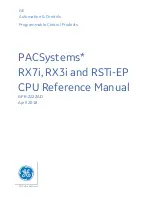
9A656-04/9A686-04 Configuration Guide
2-15
The Chassis Power Screen
2.9
THE CHASSIS POWER SCREEN
The Chassis Power screen allows the user to view current chassis power supply information.
Access the Chassis Power screen from the Chassis Menu screen by using the arrow keys to
highlight the CHASSIS POWER field and pressing ENTER. The Chassis Power screen,
Figure 2-7
, displays.
Figure 2-7
The Chassis Power Screen
The following list describes each of the Chassis Power screen fields:
Chassis Power Redundancy (Read-only)
Displays the current redundancy status of the chassis. This field will display “Available” or
“Not Available”.
Chassis Power Load (Read-only)
Displays the percentage of chassis power that is currently being utilized.
Configured Chassis Power (Read-only)
Displays the total amount, in watts, of the chassis power supplies.
Available Chassis Power (Read-only)
Displays the total amount, in watts, of chassis power that is currently available.
Chassis Backplane Voltages (Read-only)
Displays the values, in volts, of the power buses for the installed interface modules, the
environmental module, and the INB terminators respectively.
PS1 Load (Read-only)
Displays the percentage of available power that is being used by power supply one.
Summary of Contents for 9A656-04
Page 1: ...9032598 02 9A656 04 9A686 04 Configuration Guide ...
Page 2: ......
Page 8: ...Notice vi 9A656 04 9A686 04 Configuration Guide ...
Page 14: ...Contents xii 9A656 04 9A686 04 Configuration Guide ...
Page 118: ...Chapter 2 System Configuration 2 88 9A656 04 9A686 04 Configuration Guide ...
Page 172: ...Appendix C Supported MIBs Page C 10 9A656 04 9A686 04 Configuration Guide ...
















































